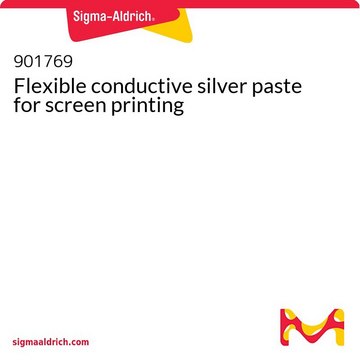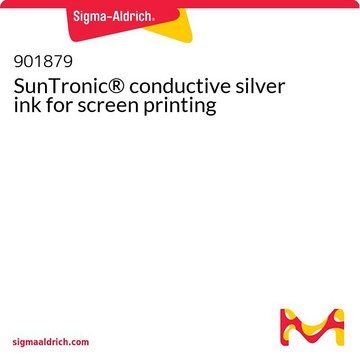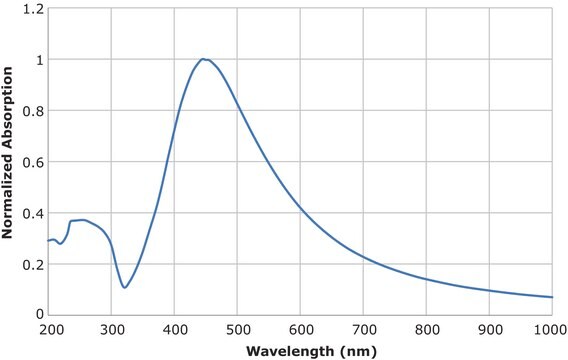791881
Conductive silver printing ink, resistivity 9 - 10 μΩ-cm
Synonym(s):
Greatcell Solar®, Dyesol® DYAG100 conductive silver ink, Screen printable silver paste
About This Item
Recommended Products
description
volume resistivity 9 - 10 μΩ-cm
Quality Level
Assay
75-85% (Solids content)
form
paste (white)
viscosity
9000-12000 mPa.s (at shear rate of 10 sec-1 at 25°C)
General description
Application
This Conductive Silver Printing Ink provides outstanding conductivity at low cure temperatures. It provides extremely low resistance of printed conducting tracks, essential for the photovoltaic applications, and is a key enabler in plastic electronics such as DSSC; OPV; CdTe solar cells etc.,by providing lowest track resistances of printed current collectors.
The Conductive Silver Printing Ink is comprised of a mixture of pure silver particles and an organometallic silver compound in an organic medium. When printed on polyester films, and then heated to 160 - 180°C, the particles consolidate to form a chemically-welded, continuous metal track.
Legal Information
Greatcell Solar is a registered trademark of Greatcell Solar Materials Pty Ltd.
Signal Word
Warning
Hazard Statements
Precautionary Statements
Hazard Classifications
Aquatic Acute 1 - Aquatic Chronic 1 - Eye Irrit. 2 - Skin Irrit. 2
Storage Class Code
10 - Combustible liquids
WGK
WGK 3
Flash Point(F)
174.2 °F
Flash Point(C)
79 °C
Choose from one of the most recent versions:
Certificates of Analysis (COA)
Don't see the Right Version?
If you require a particular version, you can look up a specific certificate by the Lot or Batch number.
Already Own This Product?
Find documentation for the products that you have recently purchased in the Document Library.
Customers Also Viewed
Articles
The ability to pattern conductive electrodes is technologically relevant for several applications, including photovolatics, displays, sensors, and biomedical devices.
Dr. Chan and researchers highlight flexible transistors are the building blocks of next-generation soft electronics. Among all the reported material systems that can be fabricated by researchers, such as circuits, biosensors, stretchable displays, and others,1–5 small molecular weight organic semiconductors are among the most promising candidates for flexible transistor applications. For these small molecular weight organic semiconductors, the semiconductor forming the conductive channel dominates the device performance.
Dye-sensitized solar cells (DSCs) are 3rd generation solar cells combining the promise of high efficiency with low production costs.
Recent progress in the area of solution-processed functional materials has led to the development of a variety of thin-film optoelectronic devices with significant promise in the industrial and consumer electronics fields.
Our team of scientists has experience in all areas of research including Life Science, Material Science, Chemical Synthesis, Chromatography, Analytical and many others.
Contact Technical Service













